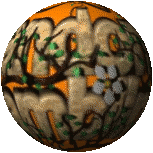To the people of the world, we are at times very confusing. Many Internet sites now list us as the UK, which doesn’t include many parts of our shores and leaves many users not being able to identify there whereabouts accurately.
Here are a list of the Isles (or islands) that form ‘The British Isles (all of those I have listed are inhabited):’
Great Britain (the main land mass built up of England, Wales and Scotland)
Ireland
The Isle of Wight (island off the middle of the South coast of England)
The Isles of Scilly (five main inhabited islands including St Mary’s and a further group of small rocky islands off the tip of Land’s End in Cornwall – near to the South-West coast of England) note: the ‘c’ is silent in Scilly
The Isle of Man
The Isle of Lundy
The Isle of Sheppey
The Hebrides: Lewis, Harris, Skye, Mull, Islay, North and South Uist, Jura, Tiree, Coll, Colonsay, Great Bernera, Rasaay, Benbecula, Barra, Scalpay, Ulva, Lismore – all inhabited
The Orkneys: Hoy, South Ronaldsay, Sanday, Westray, Rousay, Stronsay, Shapinsay, Eday
The Shetland Isles: Whalsay, Muckle Roe, Bressay, Yell, Fetlar
Fair Isle
The Small Isles
Walney Island
Aran Islands: Inis Mór
Anglesey, including Holy Island
Bardsey Island
Lindisfarne
The Isles of Firth of Clyde (Arran, The Cumbraes and Bute)
Mersey Island
Canvey Island
Looe Island
Thorney Island
Small Isles: Rùm, Eigg
Hayling Island
Foulness Island
The Channel Isles (Five larger islands consisting of Jersey, Guernsey, Alderney, Sark and Herm with a scattering of some small rocky islands)
There are other small islands that help to make up the British Isles besides those listed above, some have bird or seal colonies on them …
































































































